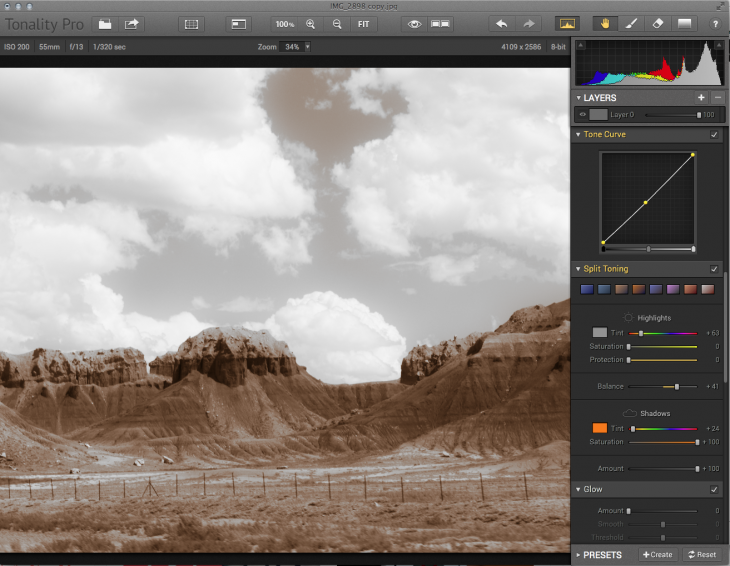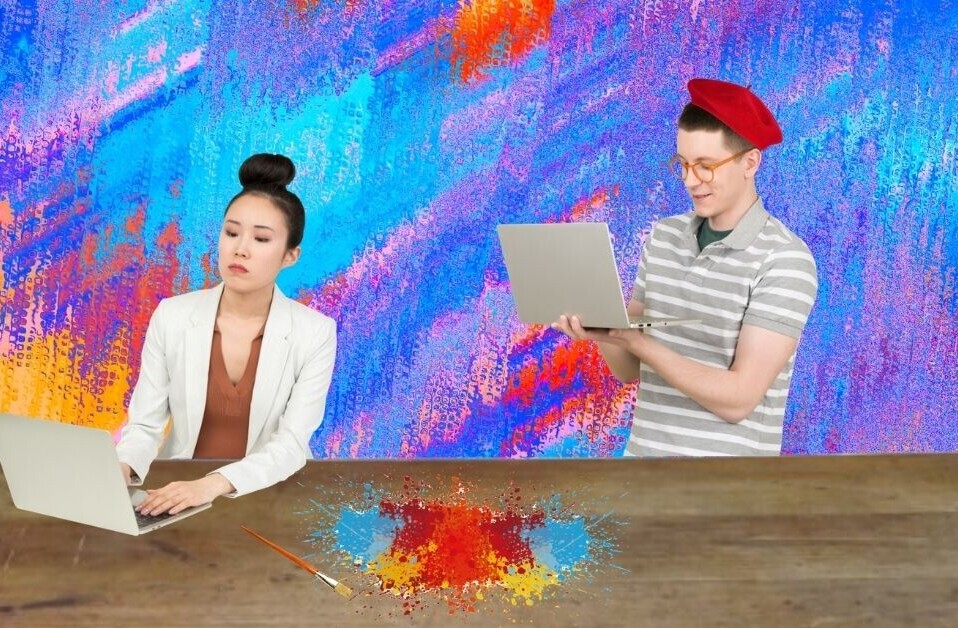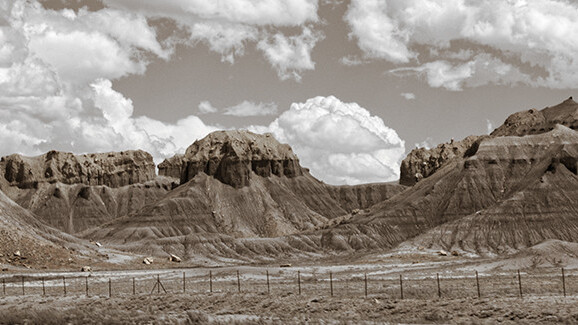
It’s been at least a dozen years since digital photography has become ubiquitous, and a curious phenomenon has emerged. People are returning to the craft’s monochromatic roots.
In the face of all the great native color digital cameras on the market, a significant number of photo enthusiasts have discovered a secret: They want to be Ansel Adams when they grow up.
Macphun, which makes Mac standalone photo editing software and plug-ins for Adobe and Apple pro editing packages like Photoshop, Lightroom and Aperture, has launched a new black and white conversion app called Tonality for transforming full-color landscapes, portraits and other images into photorealistic monochrome or duotone creations.
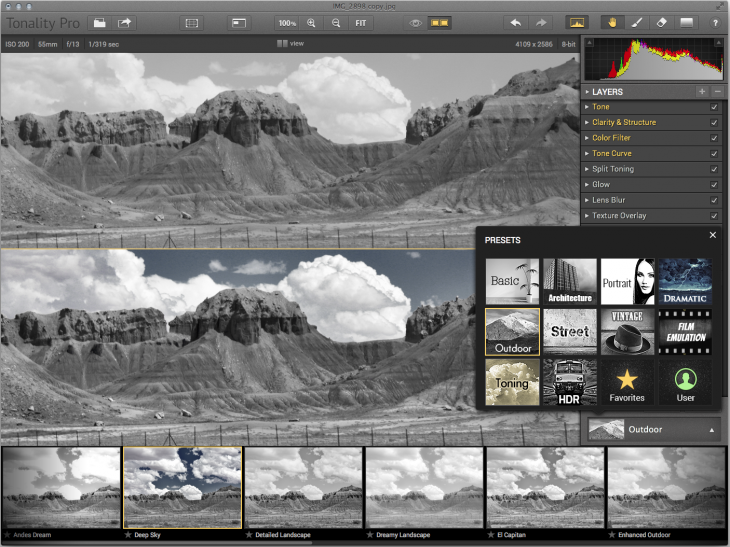
Tonality joins an elite cadre of software packages dedicated to black and white. For example, JixiPix’s Dramatic Black & White and Nik Silver Efex Pro are, like Tonality, dual desktop apps and plug-ins to Photoshop, and OnOne Software’s Perfect Black & White is part of the Perfect Photo Suite 8.5.
The app aims to give average users and enthusiasts the tools to make subtle but beautiful wide-ranging tones in black and white as easy as it is to desaturate an image in Photoshop (and with far superior results).
What I like about Tonality, and Macphun’s suite generally, is that it appeals to a broad range of users regardless of skill level. Point and shooters who know little about photographic technicalities except what they like to see, can easily use it to enhance their images.
For more advanced users however, there’s power and flexibility in being able to target layers for discrete effects at variable opacities, employ and combine smart controls like adaptive exposure and smart contrast, and use the app’s gradient mask in combination with assorted controls.
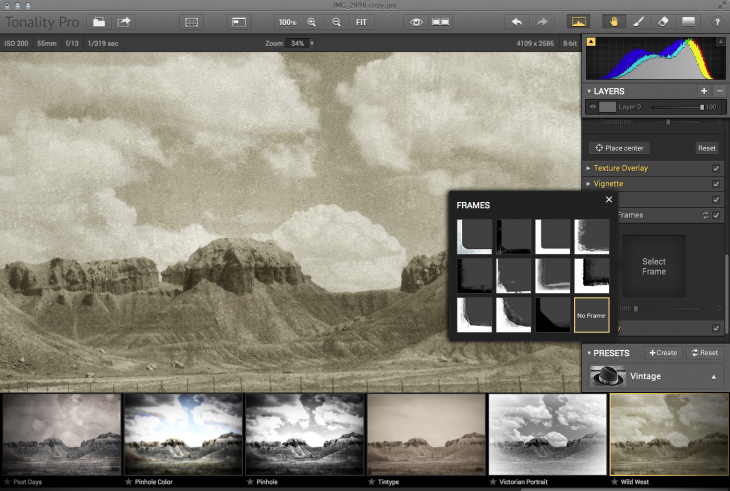
Clarity and structure modules let you improve focus and conquer lens blur without oversharpening or generating noise in the frame. Micro structures bring out very small texture details in your images. Protection sliders prevent targeted controls from affecting unintended areas of the image in a way that doesn’t involve choosing multiple mask areas. Despite its monochromatic visuals, the app actually preserves the original image color data.
Tonality’s color filters module presents an interesting take on the film camera analogy: You use the app’s color filters in the same manner as screwing on a filter to the end of your camera lens to block light at the opposite end of the color spectrum.
Aficionados of the traditional black & white film will especially get a kick out of the Film Emulation module, which features 20 grain emulations from various film stocks such as the Ilford Delta series, Agfa, Fuji, Kodak, and the all-time favorite of news photographers, Tri-X.
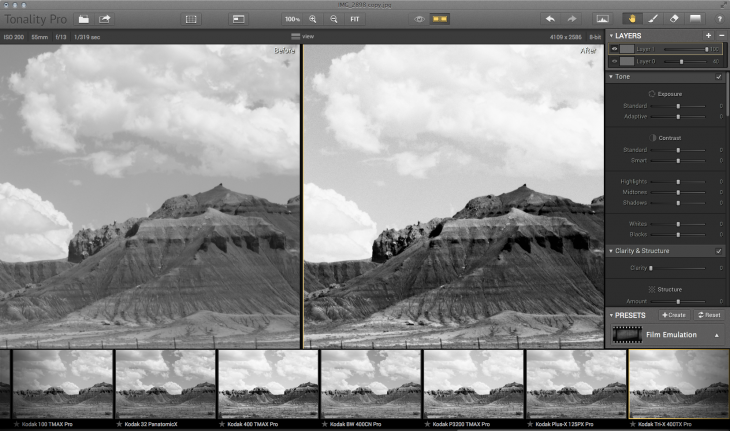
Interface
If you have used any of Macphun’s recent software packages such as Intensify, FX Photo Studio, and Focus 2, you will be instantly comfortable with Tonality. Like those packages, most of the work is done in a main window where you can view the entire tableau or enable simultaneous before and after views. A toolbar at the top offers image size variations, brushes, navigation, masking controls and an optional histogram.
A total of 10 sets of presets, plus favorites and custom sets you can create are available from the Preset popup window. Each set has multiple choices, which show up as large thumbnail previews at the bottom of the window.
If you split your screen, as I generally do, it’s easy to see the difference between the before and after based on the software adjustments. You can zoom in and out for a better feel.
Tonality’s right-hand bar gives you quick access to presets as well as a dozen adjustable effects modules that let you tweak tone, clarity and structure, split toning, lens blur and more. You can use the presets alone or in conjunction with the independent slider-based effects. There are an infinite number of combinations you can apply to your image depending on the effect you want.
Tonality works on a variety of formats including raw, thanks to its 16-bit raw processing engine, and it has many expert controls that rival darkroom-style edits. Performance is swift, which makes it easy to experiment.
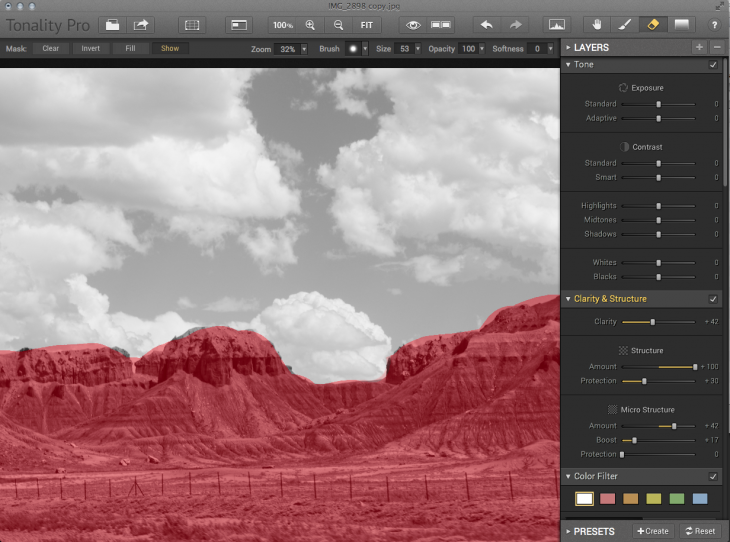
Standard and pro version
Like most of Macphun’s apps, Tonality ships in two versions — standard and pro. The standard version ($24.99) runs only as a standalone app and is available exclusively on the Mac App Store. Tonality Pro ($69.99) operates either as a standalone application or as a plug-in to Adobe Photoshop, Lightroom, Photoshop Elements and Apple Aperture, and is available only via resellers or directly from Macphun. Retail software is sold on a high-speed SD memory card.
The pro version — targeted to professional artists who mostly work in raw format and require additional tools and controls — has a number of extra features including blend modes for layers, the ability to use source color from an original image, additional layers, a color temperature tool, a center placement for vignettes and several improvements to the histogram.
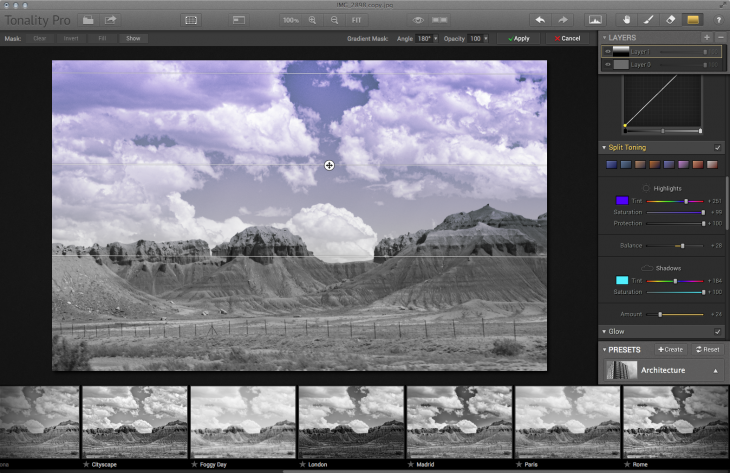
Bottom line
With Tonality as the fourth app in a series of dedicated standalone and plug-in photo editing modules, Macphun appears to have the interface down, and that is really advantageous to users. Not that it isn’t easy enough to figure out on your own. But even as a debut 1.0 product, Tonality is relatively bug-free, optimized for swift performance, and has a polished feel.
A few things could make it even better. It would still be nice to be able to open different image instances in the main window, as people work on more than one image at a time.
I also find myself wishing there were more of a variety of brushes, specifically square brushes for use in certain images. That’s a minor quibble, but something that can be easily remedied.
Tonality requires Mac OS X 10.9 and above with an Intel Core 2 Duo, Core i3, Core i5, Core i7, or Xeon processor.
Get the TNW newsletter
Get the most important tech news in your inbox each week.
